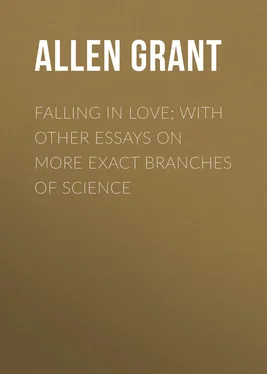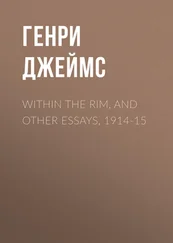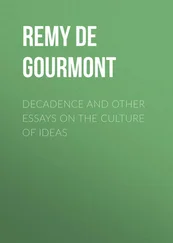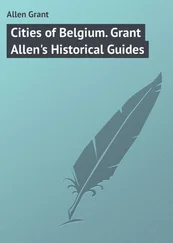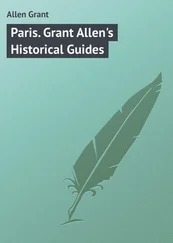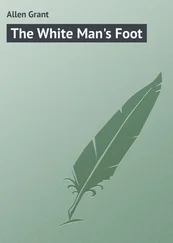Grant Allen - Falling in Love; With Other Essays on More Exact Branches of Science
Здесь есть возможность читать онлайн «Grant Allen - Falling in Love; With Other Essays on More Exact Branches of Science» — ознакомительный отрывок электронной книги совершенно бесплатно, а после прочтения отрывка купить полную версию. В некоторых случаях можно слушать аудио, скачать через торрент в формате fb2 и присутствует краткое содержание. Жанр: popular_business, foreign_edu, Прочая научная литература, на английском языке. Описание произведения, (предисловие) а так же отзывы посетителей доступны на портале библиотеки ЛибКат.
- Название:Falling in Love; With Other Essays on More Exact Branches of Science
- Автор:
- Жанр:
- Год:неизвестен
- ISBN:нет данных
- Рейтинг книги:4 / 5. Голосов: 1
-
Избранное:Добавить в избранное
- Отзывы:
-
Ваша оценка:
- 80
- 1
- 2
- 3
- 4
- 5
Falling in Love; With Other Essays on More Exact Branches of Science: краткое содержание, описание и аннотация
Предлагаем к чтению аннотацию, описание, краткое содержание или предисловие (зависит от того, что написал сам автор книги «Falling in Love; With Other Essays on More Exact Branches of Science»). Если вы не нашли необходимую информацию о книге — напишите в комментариях, мы постараемся отыскать её.
Falling in Love; With Other Essays on More Exact Branches of Science — читать онлайн ознакомительный отрывок
Ниже представлен текст книги, разбитый по страницам. Система сохранения места последней прочитанной страницы, позволяет с удобством читать онлайн бесплатно книгу «Falling in Love; With Other Essays on More Exact Branches of Science», без необходимости каждый раз заново искать на чём Вы остановились. Поставьте закладку, и сможете в любой момент перейти на страницу, на которой закончили чтение.
Интервал:
Закладка:
For example, take the following cases, which I extract, with needful simplifications, from Dr. Woodward.
'In June 1850, a living pond mussel, which had been more than a year out of water, was sent to Mr. Gray, from Australia. The big pond snails of the tropics have been found alive in logs of mahogany imported from Honduras; and M. Caillaud carried some from Egypt to Paris, packed in sawdust. Indeed, it isn't easy to ascertain the limit of their endurance; for Mr. Laidlay, having placed a number in a drawer for this very purpose, found them alive after five years' torpidity, although in the warm climate of Calcutta. The pretty snails called cyclostomas , which have a lid to their shells, are well known to survive imprisonments of many months; but in the ordinary open-mouthed land-snails such cases are even more remarkable. Several of the enormous tropical snails often used to decorate cottage mantelpieces, brought by Lieutenant Greaves from Valparaiso, revived after being packed, some for thirteen, others for twenty months. In 1849, Mr. Pickering received from Mr. Wollaston a basketful of Madeira snails (of twenty or thirty different kinds), three-fourths of which proved to be alive, after several months' confinement, including a sea voyage. Mr. Wollaston has himself recorded the fact that specimens of two Madeira snails survived a fast and imprisonment in pill-boxes of two years and a half duration, and that large numbers of a small species, brought to England at the same time, were all living after being inclosed in a dry bag for a year and a half.'
Whether the snails themselves liked their long deprivation of food and moisture we are not informed; their personal tastes and inclinations were very little consulted in the matter; but as they and their ancestors for many generations must have been accustomed to similar long fasts during tropical droughts, in all likelihood they did not much mind it.
The real question, then, about the historical toad-in-a-hole narrows itself down in the end merely to this—how long is it credible that a cold-blooded creature might sustain life in a torpid or hibernating condition, without food, and with a very small quantity of fresh air, supplied (let us say) from time to time through an almost imperceptible fissure? It is well known that reptiles and amphibians are particularly tenacious of life, and that some turtles in particular will live for months, or even for years, without tasting food. The common Greek tortoise, hawked on barrows about the streets of London and bought by a confiding British public under the mistaken impression that its chief fare consists of slugs and cockroaches (it is really far more likely to feed upon its purchaser's choicest seakale and asparagus), buries itself in the ground at the first approach of winter, and snoozes away five months of the year in a most comfortable and dignified torpidity. A snake at the Zoo has even been known to live eighteen months in a voluntary fast, refusing all the most tempting offers of birds and rabbits, merely out of pique at her forcible confinement in a strange cage. As this was a lady snake, however, it is possible that she only went on living out of feminine obstinacy, so that this case really counts for very little.
Toads themselves are well known to possess all the qualities of mind and body which go to make up the career of a successful and enduring anchorite. At the best of times they eat seldom and sparingly, while a forty days' fast, like Dr. Tanner's, would seem to them but an ordinary incident in their everyday existence. In the winter they hibernate by burying themselves in the mud, or by getting down cracks in the ground. It is also undoubtedly true that they creep into holes wherever they can find one, and that in these holes they lie torpid for a considerable period. On the other hand, there is every reason to believe that they cannot live for more than a certain fixed and relatively short time entirely without food or air. Dr. Buckland tried a number of experiments upon toads in this manner—experiments wholly unnecessary, considering the trivial nature of the point at issue—and his conclusion was that no toad could get beyond two years without feeding or breathing. There can be very little doubt that in this conclusion he was practically correct, and that the real fine old crusted antediluvian toad-in-a-hole is really a snare and a delusion.
That, however, does not wholly settle the question about such toads, because, even though they may not be all that their admirers claim for them, they may yet possess a very respectable antiquity of their own, and may be very far from the category of mere vulgar cheats and impostors. Because a toad is not as old as Methuselah, it need not follow that he may not be as old as Old Parr; because he does not date back to the Flood, it need not follow that he cannot remember Queen Elizabeth. There are some toads-in-a-hole, indeed, which, however we may account for the origin of their legend, are on the very face of it utterly incredible. For example, there is the favourite and immensely popular toad who was extracted from a perfectly closed hole in a marble mantelpiece. The implication of the legend clearly is that the toad was coeval with the marble. But marble is limestone, altered in texture by pressure and heat, till it has assumed a crystalline structure. In other words we are asked to believe that that toad lived through an amount of fiery heat sufficient to burn him up into fine powder, and yet remains to tell the tale. Such a toad as this obviously deserves no credit. His discoverers may have believed in him themselves, but they will hardly get other people to do so.
Still, there are a great many ways in which it is quite conceivable that toads might get into holes in rocks or trees so as to give rise to the common stories about them, and might even manage to live there for a considerable time with very small quantities of food or air. It must be remembered that from the very nature of the conditions the hole can never be properly examined and inspected until after it has been split open and the toad has been extracted from it. Now, if you split open a tree or a rock, and find a toad inside it, with a cavity which he exactly fills, it is extremely difficult to say whether there was or was not a fissure before you broke the thing to pieces with your hatchet or pickaxe. A very small fissure indeed would be quite sufficient to account for the whole delusion; for if the toad could get a little air to breathe slowly during his torpid period, and could find a few dead flies or worms among the water that trickled scantily into his hole, he could manage to drag out a peaceful and monotonous existence almost indefinitely. Here are a few possible cases, any one of which will quite suffice to give rise to at least as good a toad-in-the-hole as ninety-nine out of a hundred published instances.
An adult toad buries himself in the mud by a dry pond, and gets coated with a hard solid coat of sun-baked clay. His nodule is broken open with a spade, and the toad himself is found inside, almost exactly filling the space within the cavity. He has only been there for a few months at the outside; but the clay is as hard as a stone, and to the bucolic mind looks as if it might have been there ever since the Deluge. Good blue lias clay, which dries as solid as limestone, would perform this trick to perfection; and the toad might easily be relegated accordingly to the secondary ages of geology. Observe, however, that the actual toads so found are not the geological toads we should naturally expect under such remarkable circumstances, but the common everyday toads of modern England. This shows a want of accurate scientific knowledge on the part of the toads which is truly lamentable. A toad who really wished to qualify himself for the post ought at least to avoid presenting himself before a critical eye in the foolish guise of an embodied anachronism. He reminds one of the Roman mother in a popular burlesque, who suspects her son of smoking, and vehemently declares that she smells tobacco, but, after a moment, recollects the historical proprieties, and mutters to herself, apologetically, 'No, not tobacco; that's not yet invented.' A would-be silurian or triassic toad ought, in like manner, to remember that in the ages to whose honours he aspires his own amphibian kind was not yet developed. He ought rather to come out in the character of a ceratodus or a labyrinthodon.
Читать дальшеИнтервал:
Закладка:
Похожие книги на «Falling in Love; With Other Essays on More Exact Branches of Science»
Представляем Вашему вниманию похожие книги на «Falling in Love; With Other Essays on More Exact Branches of Science» списком для выбора. Мы отобрали схожую по названию и смыслу литературу в надежде предоставить читателям больше вариантов отыскать новые, интересные, ещё непрочитанные произведения.
Обсуждение, отзывы о книге «Falling in Love; With Other Essays on More Exact Branches of Science» и просто собственные мнения читателей. Оставьте ваши комментарии, напишите, что Вы думаете о произведении, его смысле или главных героях. Укажите что конкретно понравилось, а что нет, и почему Вы так считаете.
